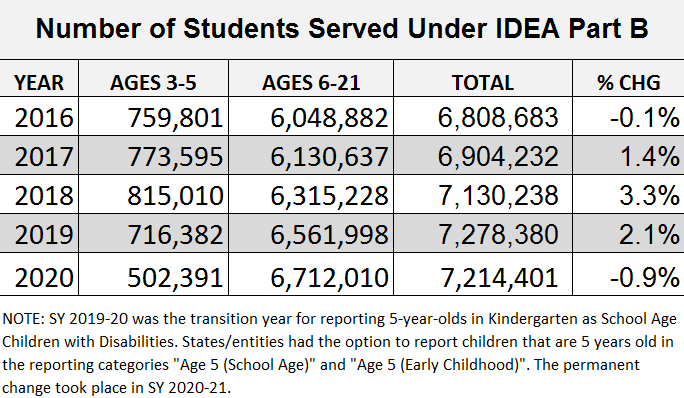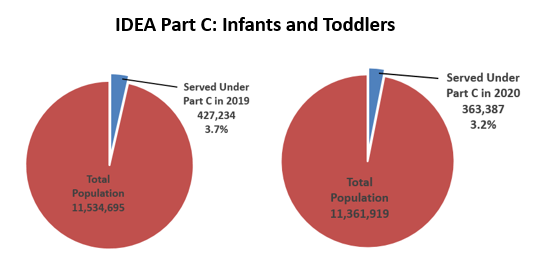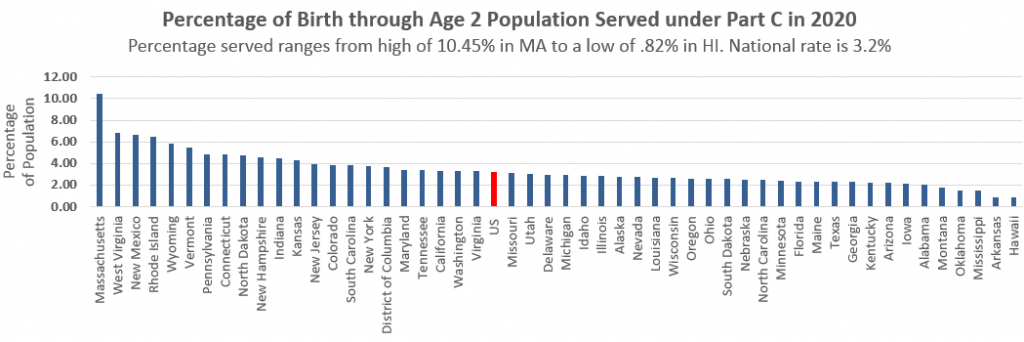Comment on Your State’s Application for IDEA Part B Federal Funds for FFY 2022
States are required to submit an annual application for Federal funds to the U.S. Dept. of Education (ED) in order to be eligible to receive their IDEA Part B Federal funds.
States must make their FFY 2022 IDEA Part B applications for Federal funds available to the public at least 60 days prior to submission to ED’s Office of Special Education Programs (due by May 27, 2022 ), accept public comment for at least 30 days, review and consider all public comments and make any necessary modifications to the application or policies and procedures, as appropriate. This means applications should be posted to SEA websites by March 28, 2022.
Through these applications, states must make a number of “assurances” regarding compliance with IDEA including assuring FAPE is available to all identified students, services are provided in the least restrictive environment (LRE) to the maximum extent practicable, identifying significant disproportionality and many more! States must also provide information on their maintenance of state financial support.
Direct links to states’ applications are provided below.
More information about the annual application is available in the following documents:
- ED Memo to states: https://sites.ed.gov/idea/files/Grants-Part-B-Procedures-for-Receiving-a-FFY-2022-Grant-Award.pdf
- ED Instructions to states: https://sites.ed.gov/idea/files/Grants-Part-B-FFY-2022-Instructions.pdf
- Application template: https://sites.ed.gov/idea/files/Grants-Part-B-FFY-2022-Application-Template.docx
STATE APPLICATIONS FOR REVIEW AND COMMENT:
AK: https://education.alaska.gov/sped
AR: https://dese.ade.arkansas.gov/Offices/special-education/policy-regulations/state-part-b-application
CA: https://www.cde.ca.gov/sp/se/as/fndapp22.asp
CO: https://www.cde.state.co.us/cdesped
CT: http://ct.mypublicnotices.com/PublicNotice.asp?Page=PublicNotice&AdId=5282271
DE: https://www.doe.k12.de.us/Page/2383
FL: http://www.fldoe.org/academics/exceptional-student-edu/
ID: https://www.sde.idaho.gov/sped/
IL: https://www.isbe.net/Pages/IDEA-Part-B-Annual-State-Application.aspx
IN: https://www.in.gov/doe/students/special-education/
KY: https://education.ky.gov/specialed/excep/IDEA/Pages/Kentucky-IDEA-State-Application.aspx
LA: https://www.louisianabelieves.com/students-with-disabilities/special-education-funding
MA: https://www.doe.mass.edu/sped/osep/idea-partb.html
ME: https://www.maine.gov/doe/doe/learning/specialed/fiscal/ideapublic
MD: https://www.marylandpublicschools.org/programs/Pages/Special-Education/IDEA.aspx
MI: https://www.michigan.gov/mde/0,4615,7-140-6598-521556–,00.html
MN: https://education.mn.gov/MDE/dse/sped/fed/index.htm
MO: https://dese.mo.gov/special-education/news-and-updates
MS: https://www.mdek12.org/OSE/IP
MT: https://opi.mt.gov/Educators/School-Climate-Student-Wellness/Special-Education/IDEA-Fiscal
NC: https://ec.ncpublicschools.gov/
ND: https://www.nd.gov/dpi/education-programs/special-education (under Compliance Data and Reports)
NE: https://www.education.ne.gov/sped/
NJ: https://www.nj.gov/education/specialed/idea/partb/
NM: https://webnew.ped.state.nm.us/bureaus/special-education/public-notices-state-performance/
NV: https://doe.nv.gov/Inclusive_Education/
OK: https://sde.ok.gov/special-education
OR: https://www.oregon.gov/ode/rules-and-policies/Pages/IDEA-Part-B.aspx
PA: https://www.education.pa.gov/K-12/Special%20Education/IDEA/Pages/default.aspx
SC: https://ed.sc.gov/districts-schools/special-education-services/fiscal-and-grants-management-fgm/
UT: https://www.schools.utah.gov/specialeducation
VA: https://www.doe.virginia.gov/special_ed/grants_funding/idea_part-b/va_application_idea_part-b.shtml
WV: https://wvde.us/special-education/finance/annual-state-idea-funding-application/





